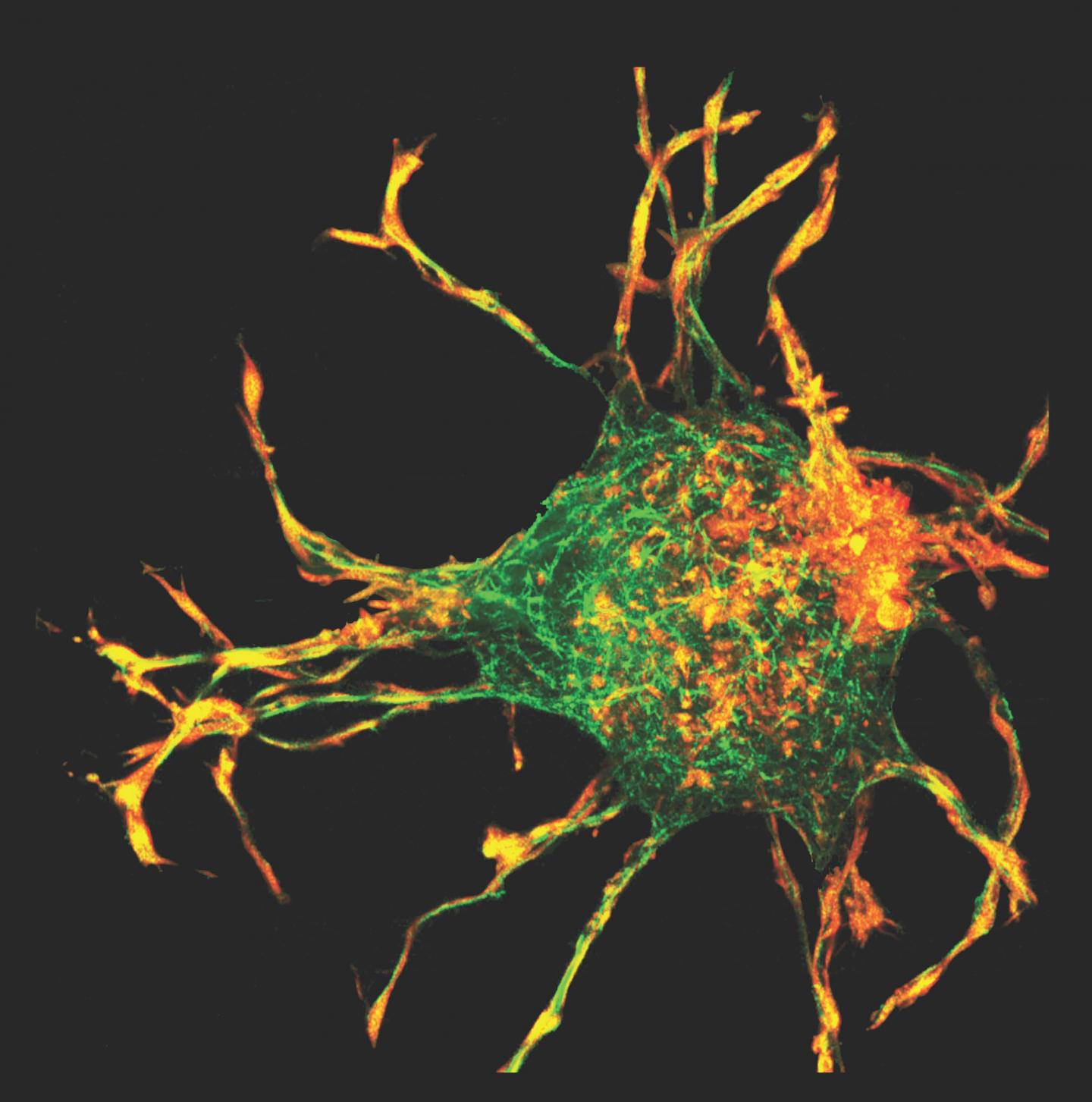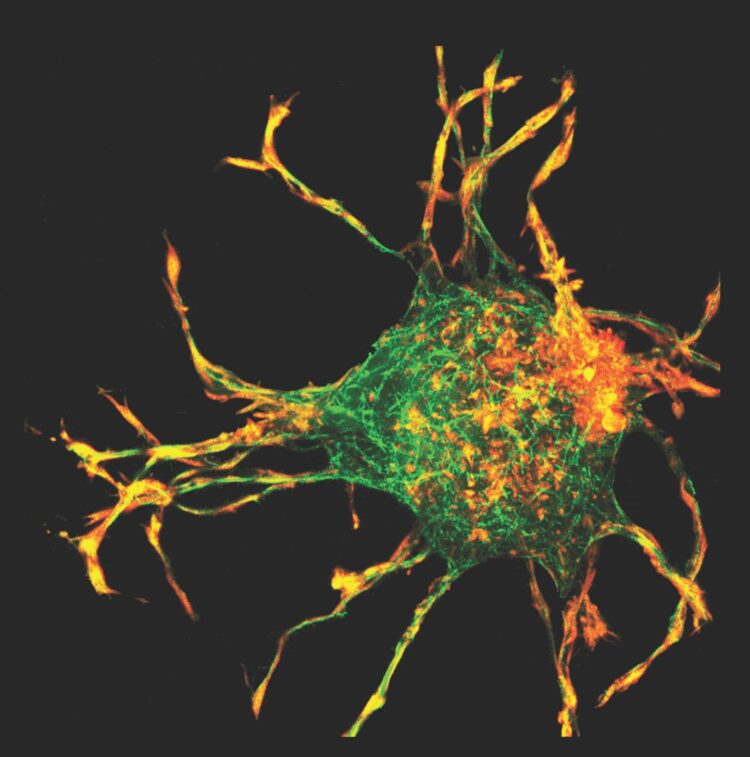Using 3D mapping, researchers uncover a process that has stymied mechanobiology

Credit: Courtesy image
When we get a wound on our skin, the cells in our bodies quickly mobilize to repair it. While it has been known how cells heal wounds and how scars form, a team led by researchers from Washington University in St. Louis has determined for the first time how the process begins, which may provide new insight into wound healing, fibrosis and cancer metastasis.
The team, led by Delaram Shakiba, a postdoctoral fellow from the NSF Science and Technology Center for Engineering Mechanobiology (CEMB) at the McKelvey School of Engineering, discovered the way fibroblasts, or common cells in connective tissue, interact with the extracellular matrix, which provides structural support as well as biochemical and biomechanical cues to cells. The team uncovered a recursive process that goes on between the cells and their environment as well as structures in the cells that were previously unknown.
Results of the research were published in ACS Nano on July 28. Senior authors on the paper are Guy Genin, the Harold and Kathleen Faught Professor of Mechanical Engineering at the McKelvey School of Engineering, and Elliot Elson, professor emeritus of biochemistry and molecular biophysics at the School of Medicine.
“Clinical efforts to prevent the progression of fibrocontractile diseases, such as scarring and fibrosis, have been largely unsuccessful, in part because the mechanisms that cells use to interact with the protein fibers around them are unclear,” Shakiba said. “We found that fibroblasts use completely different mechanisms in the early — and I think the most treatable — stages of these interactions, and that their responses to drugs can therefore be the opposite of what they would be in the later stages.”
Genin, who is the co-director of the CEMB, said the process has stymied mechanobiology researchers for some time.
“Researchers in the field of mechanobiology thought that cells pulled in collagen from the extracellular matrix by reaching out with long protrusions, grabbing it and pulling it back,” Genin said. “We discovered that this wasn’t the case. A cell has to push its way out through collagen first, then instead of grabbing on, it essentially shoots tiny hairs, or filopodia, out of the sides of its arms, pulls in collagen that way, then retracts.”
Now that they understand this process, Genin said, they can control the shape that a cell takes.
“With our colleagues at CEMB at the University of Pennsylvania, we were able to validate some mathematical models to go through the engineering process, and we now have the basic rules that cells follow,” he said. “We can now begin to design specific stimuli to direct a cell to behave in a certain way in building a tissue-engineered structure.”
The researchers learned they could control the cell shape in two ways: First, by controlling the boundaries around it, and second, by inhibiting or upregulating particular proteins involved in the remodeling of the collagen.
Fibroblasts pull the edges of a wound together, causing it to contract or close up. Collagen in the cells then remodels the extracellular matrix to fully close the wound. This is where mechanobiology comes into play.
“There’s a balance between tension and compression inside a cell that is newly exposed to fibrous proteins,” Genin said. “There is tension in actin cables, and by playing with that balance, we can make these protrusions grow extremely long,” Genin said. “We can stop the remodeling from occurring or we can increase it.”
The team used a 3D-mapping technique — the first time it has been applied to collagen — along with a computational model to calculate the 3D strain and stress fields created by the protrusions from the cells. As cells accumulated collagen, tension-driven remodeling and alignment of collagen fibers led to the formation of collagen tracts. This requires cooperative interactions among cells, through which cells can interact mechanically.
“New methods of microscopy, tissue engineering and biomechanical modeling greatly enhance our understanding of the mechanisms by which cells modify and repair the tissues they populate,” Elson said. “Fibrous cellular structures generate and guide forces that compress and reorient their extracellular fibrous environment. This raises new questions about the molecular mechanisms of these functions and how cells regulate the forces they exert and how they govern the extent of matrix deformation.”
“Wound healing is a great example of how these processes are important in a physiologic way,” Genin said. “We’ll be able to come up with insight in how to train cells not to excessively compact the collagen around them.”
###
Media Contact
Brandie Jefferson
[email protected]
Original Source
https:/
Related Journal Article
http://dx.





